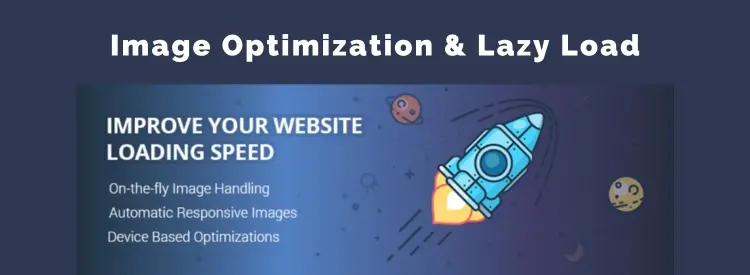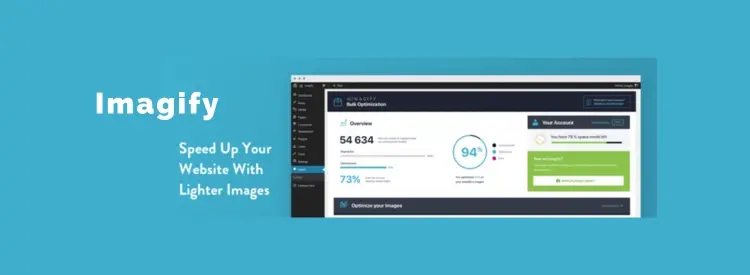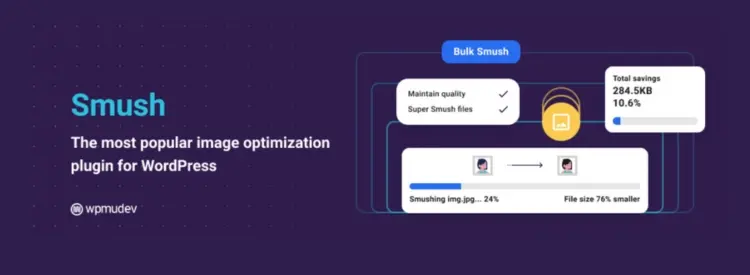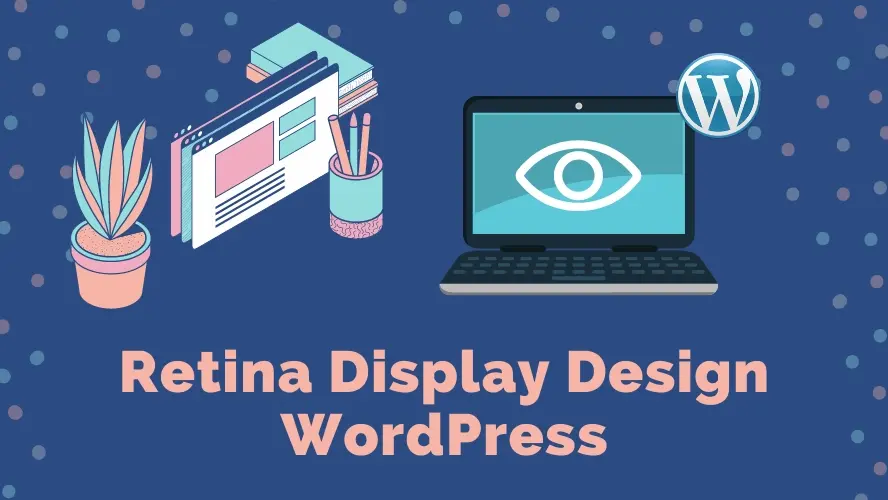The concept behind Retina Display is based on the premise that at a certain pixel density, the human eye cannot perceive the individual pixels, resulting in a smoother and more detailed visual experience. Apple achieves this by increasing the pixel density of the display to a level where the pixels are packed closely together, making them appear as a seamless, continuous image rather than separate dots.
In this article, you will learn more about several tips, some optimization techniques, and the best Retina Display plugins for WordPress.
Introduction to Retina Display
Retina Display is a term coined by Apple Inc. to describe high-resolution displays that have pixel densities high enough that the human eye is unable to distinguish individual pixels at a typical viewing distance. The term was first introduced with the release of the iPhone 4 in 2010 and has since been used in various Apple products, including iPhones, iPads, MacBooks, and iMacs.
The exact pixel density required for a display to be considered Retina varies based on the size of the screen and the typical viewing distance. Apple generally defines a Retina Display as having a pixel density of around 300 pixels per inch (PPI) or higher. However, other manufacturers may use different specifications to achieve similar visual results.
Retina Displays are known for their vibrant colors, sharp text, and crisp images, which enhance the overall visual quality and provide a more immersive user experience. They are particularly beneficial for tasks that involve detailed graphics, such as photo editing, video playback, gaming, and reading small text.
Retina Display Design Benefits
When it comes to using Retina Display design in WordPress, there are several reasons why it can be beneficial.
Enhanced Visual Experience
Retina Display offers a higher pixel density, resulting in crisper and sharper images, text, and graphics on compatible devices. This leads to an improved visual experience for your website visitors, making your content more engaging and professional-looking.
Improved Image Quality
With Retina Display, images appear more vibrant and detailed, as they are displayed at a higher resolution. This is particularly important for websites that rely heavily on imagery, such as photography portfolios, e-commerce stores, or design-oriented websites.
Future-Proofing
As Retina Display becomes increasingly prevalent across devices and platforms, it is essential to ensure your website is compatible with this technology. By using Retina Display in WordPress, you future-proof your website, ensuring it looks great on high-resolution screens now and in the years to come.
Competitive Advantage
Implementing Retina Display in your WordPress site can give you a competitive edge. With more websites adopting this technology, having high-quality, sharp visuals can set your site apart and make a positive impression on visitors, potentially leading to higher user engagement and conversion rates.
Brand Perception
Utilizing Retina Display in WordPress can improve your brand's overall perception and professionalism. By delivering a visually appealing experience, you convey a sense of quality and attention to detail, which can positively impact how visitors perceive your brand or business.
Retina Optimization for WordPress
If you're looking to optimize your WordPress website for Retina displays, you can follow a few steps to ensure your images look crisp and clear on high-resolution screens. Here's a guide to help you achieve Retina-ready pictures on your WordPress site:
Upload and Optimize High-Resolution Images
Start by using high-quality images with a higher pixel density than the standard resolution. Ideally, these images should be twice the size of the intended display size. Make sure that the website's images are optimized for high resolution. This typically involves using larger, higher-quality images and implementing techniques such as responsive design, serving images at the appropriate pixel density, and leveraging plugins or themes that support Retina Display.
Implement responsive design
Make sure your WordPress theme is responsive, meaning it adapts to different screen sizes and resolutions. Additionally, using a responsive WordPress theme that is optimized for high-resolution displays can also contribute to a better experience for your visitors using Retina devices. Many premium themes nowadays are designed to be responsive and Retina-ready out of the box.
Enable image scaling with CSS
Use CSS media queries to ensure your images scale appropriately on different devices. This way, your images will adjust to the screen's pixel density and maintain their clarity.
Consider using a Retina-optimized theme or plugin
Some WordPress themes and plugins are specifically designed to handle Retina displays. They provide built-in support for high-resolution images and ensure they are displayed correctly. Look for themes or plugins that mention Retina optimization in their features. Some plugins can automatically compress and optimize images upon upload. Optimize your web images to reduce file size without compromising quality.
Use the srcset attribute
WordPress supports the srcset attribute, which allows you to provide multiple versions of an image with different resolutions. By specifying different image sources, browsers can choose the appropriate version based on the user's device capabilities.
Test on Retina devices
Finally, make sure to test your website on actual Retina devices to verify that the images look sharp and the design is properly optimized. Hence, you can enhance the visual experience of your WordPress site on Retina displays and provide your visitors with crisp, high-resolution images.
7 Best Retina Display WordPress Plugins
While there are no specific "Retina Display" plugins for WordPress, there are several WordPress plugins and themes that can help optimize your website for high-resolution displays, including Retina displays. Here are a few options:
1. Image Optimization & Lazy Load
It is a comprehensive image optimization plugin that not only converts your images to WebP but also offers dynamic image resizing and lazy loading. It optimizes and delivers the most suitable WordPress image size for each user's device, resulting in faster page loading times.

Pros and Cons of Image Optimization & Lazy Load
Pros
Cons
2. Perfect Images
Previously known as WP Retina 2x is a popular WordPress plugin that allows you to serve high-resolution images to Retina and other high-density displays. It automatically generates and serves beautiful, crisp retina images to your visitors, ensuring that your site looks great on every device as well as on high-DPI devices.

Pros and Cons of Perfect Images
Pros
Cons
3. TinyPNG – JPEG, PNG & WebP image compression
By using the TinyPNG plugin, you can significantly reduce the file size of your images, leading to faster website loading times. While it doesn't directly convert images to WebP format, it optimizes them in their original format.

Pros and Cons of TinyPNG
Pros
Cons
4. Short Pixel
ShortPixel is a lightweight image optimization plugin that supports WebP conversion. It can compress all your past images, with a single click. The plugin also provides additional features such as bulk optimization and lazy loading of images.

Pros and Cons of Short Pixel
Pros
Cons
5. Imagify
Imagify is a powerful image optimization plugin for WordPress. It can automatically convert your images to WebP format while preserving image quality. The plugin also offers various compression options to further reduce the file size of your images.

Pros and Cons of Imagify
Pros
Cons
6. WP Smush
WP Smush is a popular image optimization plugin maintained by the WPMU DEV that can help reduce the file size of your images without sacrificing quality. It supports the lazy load to defer offscreen images and is able to optimize and compress images in bulk with one click.

Pros and Cons of WP Smush
Pros
Cons
7. EWWW Image Optimizer
EWWW Image Optimizer is a versatile plugin that can optimize and convert images to WebP format. It provides options for manual and automatic image conversion. The plugin also offers bulk optimization and can optimize images stored in other folders outside of the WordPress media library.

Pros and Cons of EWWW Image Optimizer
Pros
Cons
Conclusion
Remember that optimizing your images for Retina displays involves serving higher-resolution images and optimizing their file sizes. Compressing images and using efficient image formats, such as WebP or AVIF, can help improve loading times and overall performance.
Although Retina Display can improve the viewing experience, it is important to take things like website performance and accessibility into account. A successful website must strike a balance between the advantages of high-resolution imagery, optimal page load speeds, and accessibility for all visitors.
Frequently Asked Questions
How do I choose a design for my website?
One of the most important things when creating a website for your art is the design. Even though your pieces of art might be amazing, people will leave if your site is hard to navigate. This is why it’s important that the site is easy on the eyes and easy to navigate.
Is a WordPress blog free?
Anyone can download, use, customize, and edit the WordPress code as long as they release it under the GNU General Public License (GPL). Even though the software is free, you can end up paying for things like premium support and hosting.
Are WordPress-free themes safe?
People often think that free themes have low quality. However, free WordPress themes actually have high quality and are free to use.
Can WordPress be used for eCommerce?
WordPress offers many different ways to build an eCommerce online store for all types of products and markets. Almost 40 percent of all online shops are powered by WooCommerce, a WordPress eCommerce plugin.

Audee Mirza is a graphic designer and WordPress developer at audeemirza.com who resides in Surabaya, Indonesia. She's also the author of Graphic Identity Blog, a professional logo designer, and often creates vector illustrations for clients and marketplaces. She enjoys good typography design and all kinds of animation.
View all posts by Audee Mirza




















